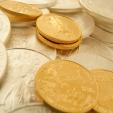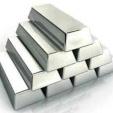The Contrarian Trade Of The Decade
Mr. Bernanke, in a move made mostly to bolster his legacy, stated in his final press conference as Chairman of the Fed that he would start to reduce asset purchases in January of 2014. Nearly every advisor on Wall Street took the news as evidence the Fed can now remove its manipulation of interest rates with complete economic immunity. However, what these pundits fail to realize is that the Fed’s economic recovery strategy was based on artificially boosting bond, equity and real estate prices. Now our central bank is promising to remove its support of asset price. Therefore, the lesson we are all about to learn is that bubble-based economies always fail.
As 2013 year draws to a close, the Ten-Year Note yield has climbed above 3%, from its 1.5% level in the spring. This move higher is occurring despite the fact that the Fed’s tapering of bond purchases has yet to even begin. And, even when the taper starts in January the Fed will still be buying $75 billion of MBS and Treasuries. Therefore, Wall Street’s ebullient reaction to the taper announcement is both premature and misguided.
Interest rates will rise significantly in the first half of next year, which will send bonds, stocks and home values into a sharp correction. The real estate market (the corner stone of the Fed-engineered recovery) is already starting to see cracks in its foundation. According to the Mortgage Banking Association, the index for applications to purchase and refinance a home fell 6.3% last month, sending the index to its lowest level in thirteen years. Further evidence of waning demand for homes came from the National Association of Realtors (NAR). Existing home sales fell for the third straight month to its lowest level in a year. The NAR also reported that sales were down 4.3% from October to November and were lower by 1.2% YOY. The weakness in housing extended to new home sales also, as they fell 2.1% in November.
Weakening demand for homes hasn’t stopped builders from ignoring the fundamentals (much like they did during the housing bubble in the middle of last decade) and continue to increase inventory. New home starts were up 22.7% in November and were up 29.6% YOY. Existing home inventories were also up 5% YOY.
In normal market conditions falling demand and increasing supply would cause prices to fall. However, prices for new homes are up 10.6% YOY, while existing home prices rose 9.4% YOY, according to the NAR. Other measures of home prices, like S&P/Case-Shiller National Index, shows overall home values climbed 13.3% YOY. Why would prices be soaring double digits when demand is plunging and supply is on the rise? The only viable answer is QE!
Turning to the equity market, the S&P is up 25% this year while real GDP has advanced only about 2%? You just can’t have strong and sustainable revenue and earnings growth when real GDP is growing at 2%. And, you certainly should not be able to post equity market returns of 25% if growth in the economy is so small. How did investors achieve such lofty gains this year? The only answer can be QE!
Finally, the 10-Year Note is yielding 3%. How could that benchmark yield be offering a return that is four hundred basis points below its 40-year average while the nation’s publicly traded debt is up $7.2 trillion (140%) since the start of the Great Recession? You guessed it, QE!
Without the Fed’s intentional manipulation of interest rates and money supply, the real estate and stock markets would be in a significant correction. This is because the Fed’s debt monetization efforts have distorted all free-market indicators of where prices ought to be.
Keep in mind Mr. Bernanke’s taper has yet to begin, and once commenced, it will be diminished only marginally. Nevertheless, if Janet Yellen continues to attenuate asset purchases by $10 billion each month, investors should expect an equity market correction in the first half of next year of at least 15%, as benchmark yields soar past 4%.
My primary market prediction for 2014 is that the Taper of asset purchases will be terminated, and then most likely be reversed by the end of Q2; but only after investors experience a massive correction in asset values and economic growth. This change in monetary policy will mark a significant turn in the U.S. dollar, international equities and commodity prices. Most importantly, the best opportunity for next year is to buy what no one else on Wall Street owns at this juncture. I can’t think of anything more hated than the shares of precious metal mining companies. Therefore, the contrarian trade of the decade is to fade the equity market rally that is based on the overwhelmingly accepted, but false assumption, of a successful Fed taper.
********
Michael Pento is the President and Founder of Pento Portfolio Strategies and Author of the book “The Coming Bond Market Collapse.”
twitter@michaelpento1
(O) 732-203-1333
(M) 732- 213-1295

















